 |
surfresearch.com.au
mcdonagh : board construction, 1964 |
| home | catalogue | history | references | appendix |
|
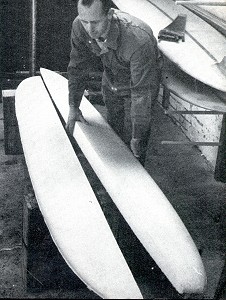 |
|
in half to permit insertion of the reinforcing wood spar. |
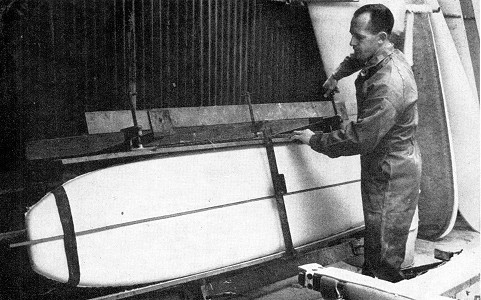
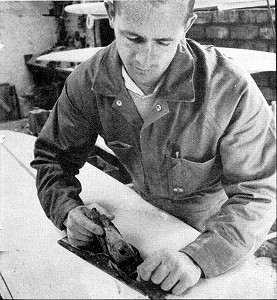 |
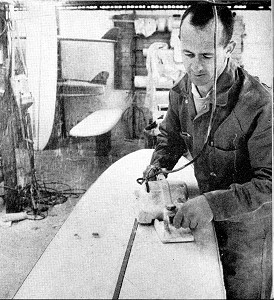 |
|
and levelled with a plane, smoothing down the spar. |
honed with this electric plane. No paint is used until later. |
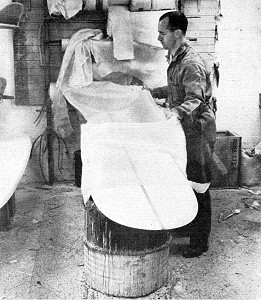 |
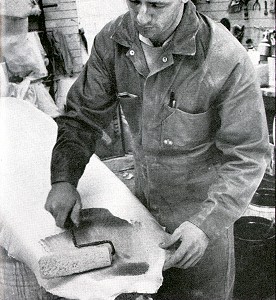 |
|
an electric cutter, reducing the board width to 21 or 232 inches. |
layer of fibreglass cloth impregnated with Polyester resins. |
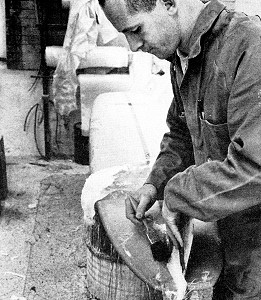 |
 |
|
strength to their fibreglass skins, here being glued into place. |
from solid sheets of fibreglass. Customer's tastes in fins vary. |
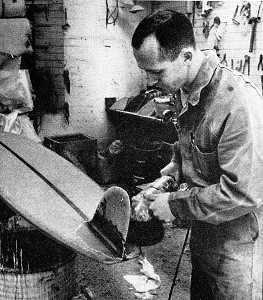 |
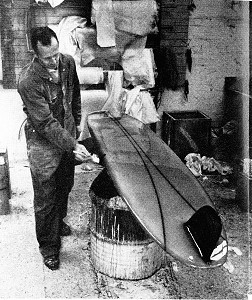 |
|
and given a further coating of Polyester resin. This is called glassing. (sic, glossing) |
width and shape, the customer can pick his own colour combination. |


| home | catalogue | history | references | appendix |